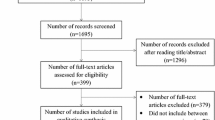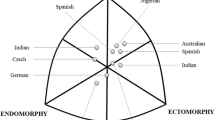Abstract
Sports analytics is one of the fast-growing applications of machine learning and data mining. The major goal in sport analytics applications is to make informed decisions to gain a competitive advantage. In this paper, we propose a method to analyse and predict lineup performance in basketball which may assist the team managers and coaches to make informed decisions. The constant lineup change in basketball games makes it vital to always have the best move ready at every moment of the game. A complex decision-making system is very important for the coaches to navigate their team through a season. This system must make the decisions based on the pros and cons of the teams, past results and lineups, and both teams’ performance under similar situations. To create this system, authors have constructed a signed, directed, and weighted network from the results of all matchups and lineups of the teams in NBA from 2007 to 2019. The proposed approach uses machine learning and graph theory to develop a new metric called Inverse Square Metric and edge-centric multi-view networks to predict the performance of a lineup in a given situation. The edge-centric approach provides a deep analysis of any condition between two teams from 16 different perspectives. The average accuracy achieved by ISM and edge-centric multi-view is 68% and 80%, respectively. In the end, the training and test datasets are chosen from different seasons and results are reasonable compared to the baseline methods.







Similar content being viewed by others
References
Ahmadalinezhad M, Makrehchi M, Seward N (2019) Basketball lineup performance prediction using network analysis. In: Proceedings of the 2019 IEEE/ACM international conference on advances in social networks analysis and mining, pp 519–524
Atlas M, Zhang YQ (2004) Fuzzy neural agents for online NBA scouting. In: Proceedings of the 2004 IEEE/WIC/ACM international conference on web intelligence. IEEE Computer Society, pp 58–63
Baghal T (2012) Are the “four factors” indicators of one factor? An application of structural equation modeling methodology to NBA data in prediction of winning percentage. J Quant Anal Sports 8(1). https://doi.org/10.1515/1559-0410.1355
Beckler M, Wang H, Papamichael M (2013) NBA oracle. Zuletzt besucht am 17(20082009.9)
Berri DJ (2017) National basketball association. In: Fizel J (ed) Handbook of sports economics research. Routledge, New York
Cao C (2012) Sports data mining technology used in basketball outcome prediction. Technological University Dublin
Caudill SB (2003) Predicting discrete outcomes with the maximum score estimator: the case of the ncaa mens basketball tournament. Int J Forecast 19(2):313–317
Cheng G, Zhang Z, Kyebambe MN, Kimbugwe N (2016) Predicting the outcome of NBA playoffs based on the maximum entropy principle. Entropy 18(12):450
Grover A, Leskovec J (2016) node2vec: Scalable feature learning for networks. In: Proceedings of the 22nd ACM SIGKDD international conference on knowledge discovery and data mining. ACM, pp 855–864
Harville DA (2003) The selection or seeding of college basketball or football teams for postseason competition. J Am Stat Assoc 98(461):17–27
Harville DA, Smith MH (1994) The home-court advantage: how large is it, and does it vary from team to team? Am Stat 48(1):22–28
Jones MB (2007) Home advantage in the nba as a game-long process. J Quant Anal Sports 3(4). https://doi.org/10.2202/1559-0410.1081
Jones MB (2008) A note on team-specific home advantage in the NBA. J Quant Anal Sports 4(3). https://doi.org/10.2202/1559-0410.1128
Kubatko J, Oliver D, Pelton K, Rosenbaum DT (2007) A starting point for analyzing basketball statistics. J Quant Anal Sports 3(3). https://doi.org/10.2202/1559-0410.1070
Leskovec J, Huttenlocher D, Kleinberg J (2010) Predicting positive and negative links in online social networks. In: Proceedings of the 19th international conference on world wide web. ACM, pp 641–650
Loeffelholz B, Bednar E, Bauer KW (2009) Predicting NBA games using neural networks. J Quant Anal Sports 5(1). https://doi.org/10.2202/1559-0410.1156
Miljković D, Gajić L, Kovačević A, Konjović Z (2010) The use of data mining for basketball matches outcomes prediction. In: 2010 8th International symposium on intelligent systems and informatics (SISY). IEEE, pp 309–312
Oh Mh, Keshri S, Iyengar G (2015) Graphical model for basketball match simulation. In: Proceedings of the 2015 MIT sloan sports analytics conference, Boston, MA, USA, vol. 2728
Pelechrinis K (2017) Linnet: probabilistic lineup evaluation through network embedding. In: Joint European conference on machine learning and knowledge discovery in databases. Springer, pp 20–36
Stefani RT (1977) Football and basketball predictions using least squares. IEEE Trans Syst Man Cybern 7(2):117–21
Stefani RT (1980) Improved least squares football, basketball, and soccer predictions. IEEE Trans Syst Man Cybern 10(2):116–123
Stekler HO, Klein A et al (2012) Predicting the outcomes of ncaa basketball championship games. J Quant Anal Sports 8(1):1–10
Teramoto M, Cross CL (2010) Relative importance of performance factors in winning NBA games in regular season versus playoffs. J Quant Anal Sports 6(3). https://doi.org/10.2202/1559-0410.1260
Wasserman S, Pattison P (1996) Logit models and logistic regressions for social networks: I. an introduction to markov graphs andp. Psychometrika 61(3):401–425
Funding
Funding was provided by Canadian Network for Research and Innovation in Machining Technology, Natural Sciences and Engineering Research Council of Canada.
Author information
Authors and Affiliations
Corresponding author
Additional information
Publisher's Note
Springer Nature remains neutral with regard to jurisdictional claims in published maps and institutional affiliations.
Rights and permissions
About this article
Cite this article
Ahmadalinezhad, M., Makrehchi, M. Basketball lineup performance prediction using edge-centric multi-view network analysis. Soc. Netw. Anal. Min. 10, 72 (2020). https://doi.org/10.1007/s13278-020-00677-0
Received:
Revised:
Accepted:
Published:
DOI: https://doi.org/10.1007/s13278-020-00677-0




